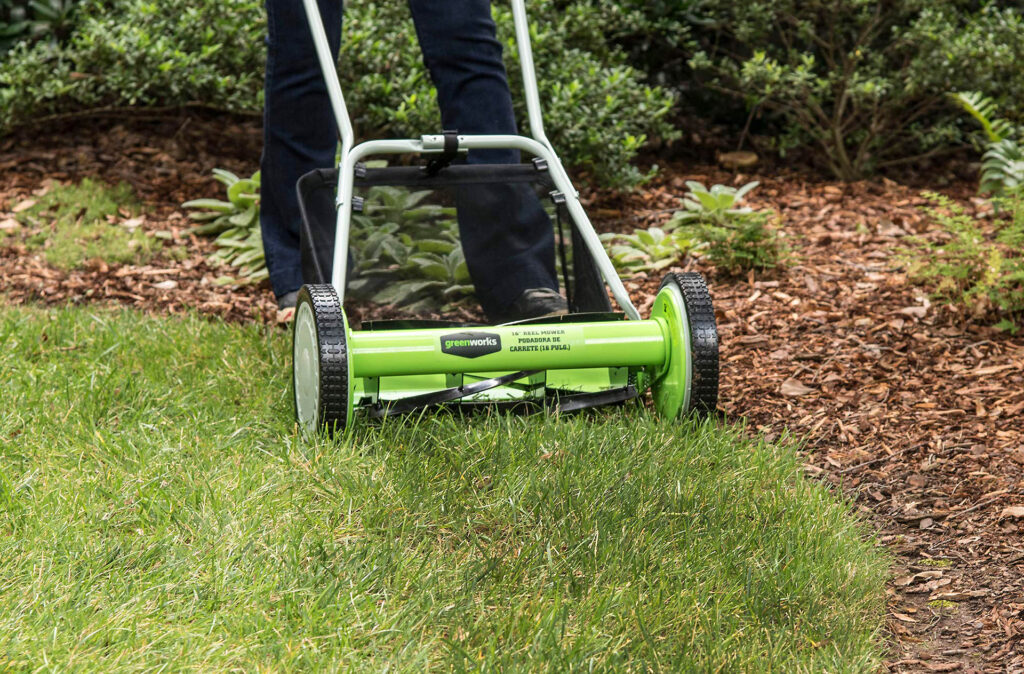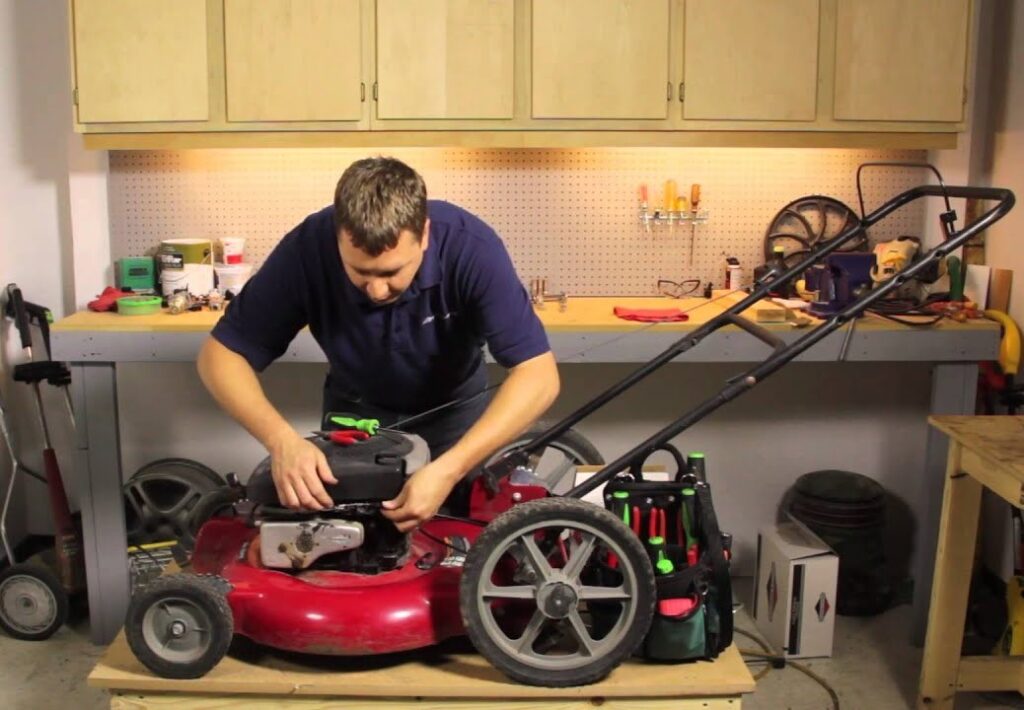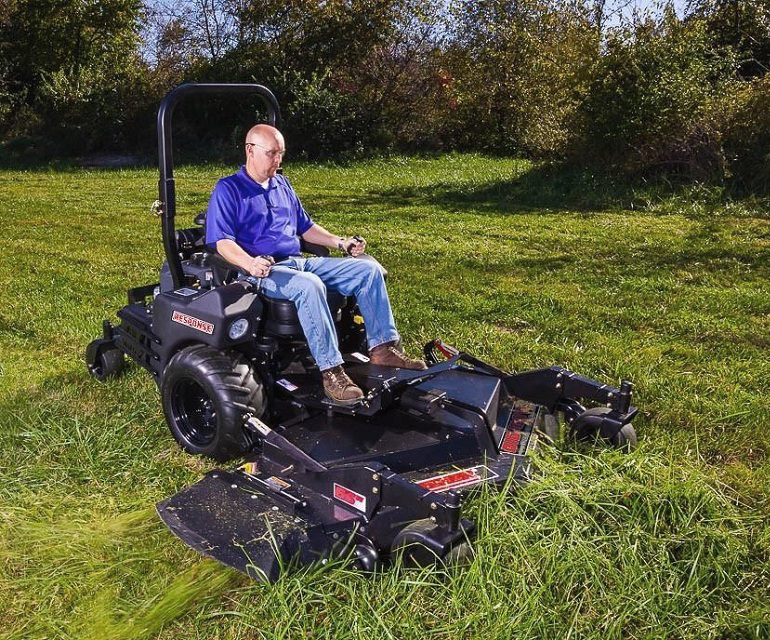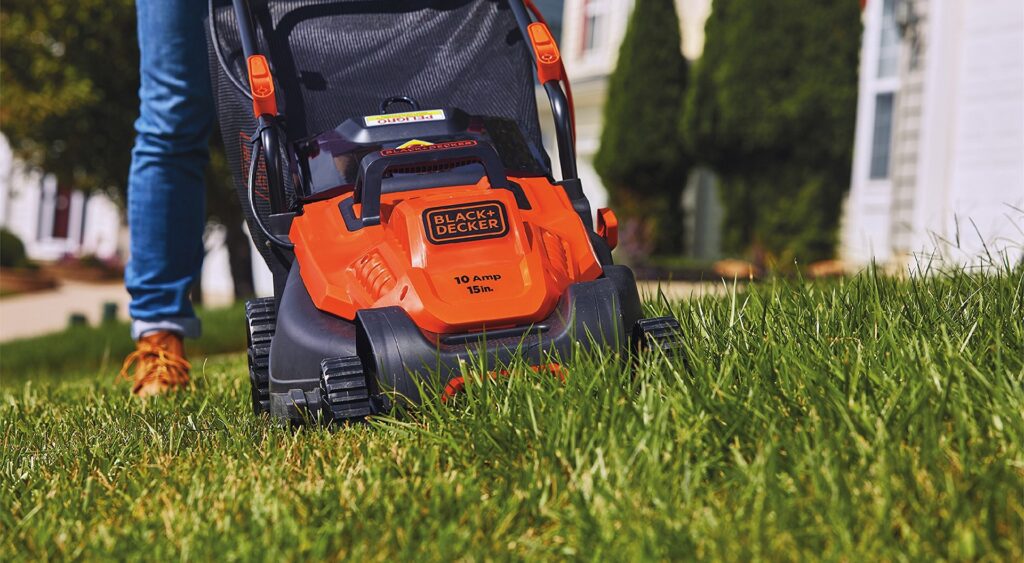
It’s frustrating when, after racking up the motivation to mow your lawn, the lawn mower starts then dies off. For some people, that’s a sign to crack out a beer and watch football instead, but we disagree.
Since the lawn will still need mowing even if your lawnmower won’t stay running, the easiest way out of the problem is to find a quick fix and get it over with – then you can get your beer. In any case, the reason your Honda or Toro lawn mower starts then stops is more likely to be a trivial one.
When a small engine is starting, air-fuel mixture is sprayed in a fine mist into the combustion chambers. The starter gets the piston(s) moving to compress it, and a spark plug ignites to start the engine going.
A failure in any of these linked processes can stop your gas-powered lawn mower from starting: fuel, ignition, or carburettor. Even the best commercial lawn mowers experience such problems now and then.
A healthy lawn mower should start in a few seconds, its engine purring away hungrily with only a slight squeeze of the gas. However, if it sputters and dies a few cranks, the cause could be any one of these.
The air filter traps dust, pollen, and other debris from air before it is mixed with the fuel. A clogged air filter results in reduced air flow, which means that there won’t be enough to create the right air-fuel ratio for ignition.
If your lawn mower’s air filter is clogged, it will usually show a few signs. There will be a decrease in power, higher fuel consumption, and stalling. When starting, you will hear the engine stutter before dying, as if it can’t quite catch on.
You can easily check the air filter condition and clean or replace it if necessary. Simply remove the cover from the air filter box on the side of the lawn mower and take out the spongy or fibrous air filter. If it is dusty, use soap and water to clean it. Just make sure that it dries completely before reuse.
Eight times out of ten, the reason why your lawn mower won’t turn over is because of a dirty carburettor bowl. The carburettor works by mixing air with fuel to create the right air/fuel mixture ratio to send into the ignition chamber.
However, cumulative use can cause a gummy residue to form inside the carburettor bowl due to leftover fuel, dust, or oil. This stops the carburetor from working properly. Here are some signs that your lawn mower is probably suffering from a bad carburetor:
After a long period of storage, the carburettor is very likely to have become clogged from the gas left in it. To clean it, a can of WD-40 or carburettor cleaner helps you blow out the caked dirt and clogs.
A specialized carburetor clean such as the Berryman B-9 works great because it is designed to break down gum, varnish, sludge, hardened carbon, oil, and grease. Plus, it is compatible with all metals, plastic, rubber, and even painted parts.
The cleaner helps you to restore the carburetor to perfect working conditions.
If you don’t want to take the whole carburettor apart, that’s okay. Simply use a ½” plug wrench to unscrew the bolt at the bottom of the bowl. Use a thin wire to clean out the dirt from the hole and around it, then spray with the cleaner. Recap the bowl but avoid over-tightening it.
You might still experience problems with your carburetor even after cleaning it. It can get worn out when moving parts like the float, needle, or diaphragms deteriorate with time and age.
These problems cause a lean (too little fuel) or rich (too much fuel) mixture, which you can tell from how the engine sounds.
If you suspect a faulty carburetor, this video shows you how to replace it easily:
However, sometimes you just need to replace a single part of the carburetor. One of the common culprits of a bad carburetor is a primer bulb, which is supposed to draw up vaporized fuel to mix with air. To diagnose a problem with the carburetor primer,
Today, most high-end riding lawn mowers rely on an electric fuel pump instead of a carburetor. To reduce problems with airflow and fuel, a model such as the Husqvarna Z254 Zero Turn lawn mower is an excellent choice. Easily the best residential lawn mower, it comes with an easy self-start system, and even a battery.
Sometimes your lawn mower sits idle for months or years on end. During this time, gasoline tends to degrade, which leaves behind a sticky sludge. This comes as a result of evaporation of the more volatile components in the fuel.
Even just three months without use can cause problems with gasoline, especially if it doesn’t have a good stabilizer chemical added. One of the signs of old gas in your lawn mower is that it might seem to start for a few seconds, then sputter and die. From there, it simply won’t start.
The solution to starting a lawnmower with old gas is to get the sticky, varnish-like residue out of the machine’s internal parts. You also have to remove any built-up residue and sediment, which could be choking the engine.
After this, make sure to put in fresh gas and monitor how the lawn mower performs. For a riding lawn mower that starts then dies, you could also have a clogged fuel pump. You can disassemble and clean it up with the aerosol cleaner or simply replace it to get started once again.
Your lawn mower’s fuel filter is located in the fuel tank or along the fuel line. It’s purpose is to remove any suspended particles from reaching and potentially damaging the carburetor, fuel pump, or engine.
Your owner’s manual should let you know where your gas filter is located. If it is in the fuel tank, you will need to drain off all the fuel first. Remove it according to instructions and check for clogging and blockage. Partial clogging can cause lack of power or uneven idling, while a serious one will stop the engine from starting. In this case, simply replace it with a new one.
Sometimes, the reason why your Husqvarna lawn mower starts then dies (not specifically that brand, just saying) is because no gas is reaching the carburetor and engine. A blockage in the gas tank can be the reason why this happens.
Given the dirty nature of its work, your lawn mower can suck in tiny dirt particles through the tank itself or the fuel line outlet. Most gas tanks also have a hole in the fuel cap used to equalize air pressure in the tank. If the hole gets blocked, a vacuum is created inside the tank and stops gas from flowing into the fuel line. Another possible cause is old gas
Whatever the reason, you need to carefully clean your gas tank if you suspect this to be the reason why your Troy Bilt lawn mower starts then dies.
A blocked fuel line can also prevent gas from reaching the carburetor. This is another common reason why your Briggs and Stratton lawn mower starts then dies.
Diagnosing a gas line problem is not easy, so most people just choose to replace it and the gas filter since they are so cheap. However, if you have already identified a blocked gas line, you need to clean it carefully to avoid damage.
A choke is a valve that “chokes off” the supply of air in the carburetor so that a richer fuel mixture goes to the engine. This makes starting it much easier, especially during a cold start.
However, a faulty choke could be the reason why your riding lawn mower starts then dies. This could be because the choke cable doesn’t adequately change the position of the choke any more.
A faulty choke can also cause flooding in the engine, a situation where too much fuel enters into the compartment to be ignited successfully. In extreme circumstances, this could force you to open up the engine to drain the excess fuel out. This is the reason why you shouldn’t keep on pulling on the gas line until your engine has started.
If your engine seems to start then stalls, it’s most likely a choke problem.
You might have noticed just how much can go wrong with a gas-powered lawn mower to stop it from starting. An electric cordless lawn mower such as the Greenworks 40V lawn mower is a great alternative.
While the battery is usually enough one the typical suburban lot, the self-propelled lawn mower actually has ports for two batteries, which is quite thoughtful.
A working spark plug provides the tiny explosions which ignite the fuel mixture in your lawn mower’s engine. If it is faulty or dirty, it may not function properly to start your engine at all, which could be why your Craftsman riding lawn mower starts then dies.
The spark plug is supplied with DC current from an alternator or battery in your lawn mower, so it will usually have a thick cable connected to it. If there is any defect in this cable, it may be a simple job of replacing or reconnecting it.
It’s more likely that the spark plug is worn out or coated with build-up. To check this, use a plug wrench to remove the spark plug from the engine. A wire brush can help you clean off some of the build up, but it’s always better to have it replaced. If the spark plug is misfiring or cracked, always replace it with a new one.
If after all this, the engine still fails to catch on, the problem could be a result of excess oil in the reservoir. The oil can flood the engine as well, causing it to emit a white smoke when running.
Another symptom of excessive oil is when the engine runs for a minute or two then dies off. However, this is a simple problem to solve. Use the oil dipstick to check the oil levels and drain if necessary. You can also tilt the lawn mower up for a few minutes to let the oil circulate to other parts of the engine before starting again.
These common problems why your lawn mower doesn’t start on the first try can be eliminated with proper maintenance. Just remember to always disconnect the spark plug before doing any maintenance work to prevent accidental starts.
Gas-powered lawn mowers are fairly easy to maintain and repair even with minimal experience. Although some of the more complicated problems might require professional help, you can usually solve 90% of the reasons why your lawn mower starts then stops.
If you don’t particularly enjoy the inconvenience of gas lawn mowers or the limitations of battery-powered cordless options, perhaps a corded electric lawn mower is your solution. Whether you go gas or electric, proper maintenance and care will be the key to getting a long life of service out of your lawn mower.
Now, how about that beer?





